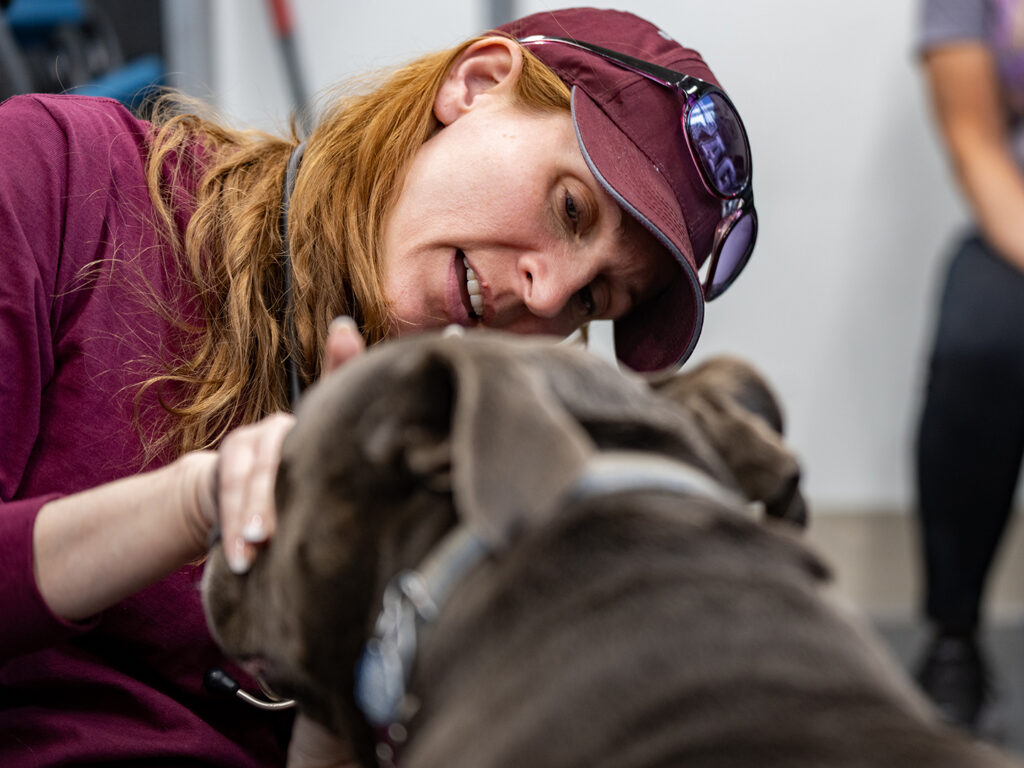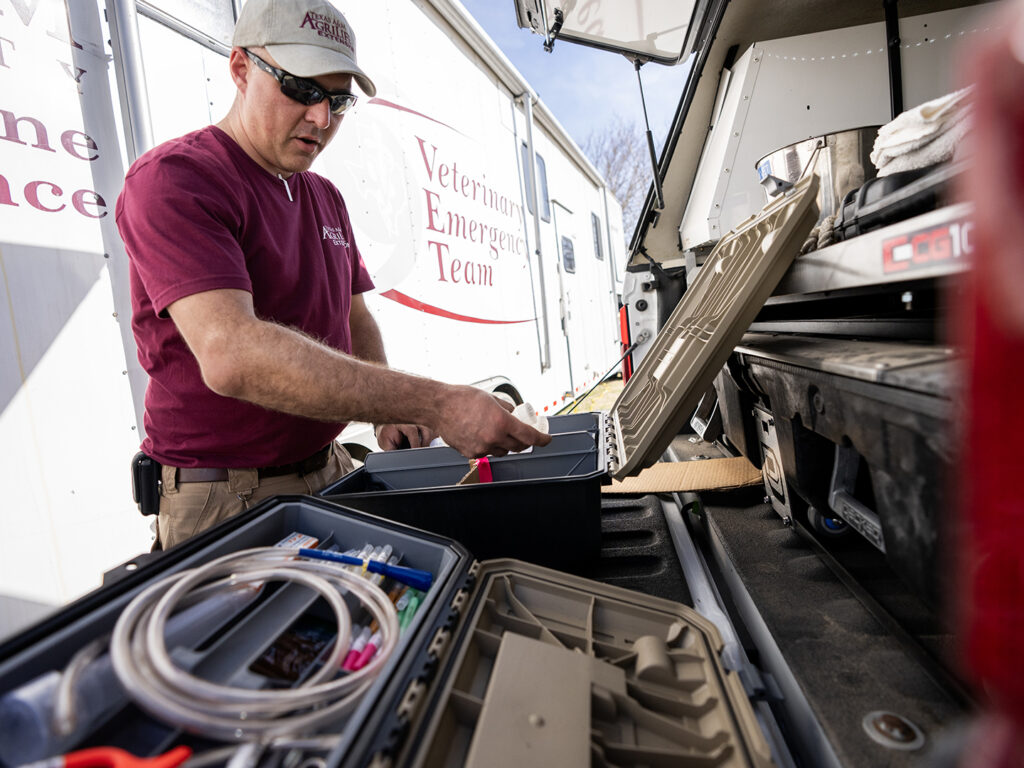Texas A&M Veterinary Emergency Team Returns To College Station Following Smokehouse Creek Fire Deployment
Story by Jennifer Gauntt, VMBS Marketing & Communications

Photo by Sam Craft, Texas A&M AgriLife Marketing and Communications
After eight days of providing veterinary medical care to the animals of Texas Panhandle citizens affected by the Smokehouse Creek Fire, as well as to canine search and rescue teams, the Texas A&M Veterinary Emergency Team (VET) is returning home to Bryan-College Station Friday evening.
The team deployed to Canadian, Texas, on Feb. 28, just before the Smokehouse Creek Fire was declared the largest wildfire in Texas history.
Over the course of the 10-day deployment, 36 faculty, staff, and Doctor of Veterinary Medicine students from the Texas A&M School of Veterinary Medicine & Biomedical Sciences (VMBS) and the Texas A&M AgriLife Extension Disaster Assessment and Recovery team worked across five counties in the region. VMBS colleagues at the Veterinary Education, Research, & Outreach (VERO) campus in Canyon also provided additional veterinary medical support for residents in Potter and Gray counties.
The team estimates they observed (visually checked) 672 cattle and examined or treated 271 animals, including cattle, horses, donkeys, dogs, cats, a pig, and a goat, for injuries that spanned burns, hoof issues, and respiratory issues resulting from smoke inhalation, as well as provided nutritional support to calves that had lost their mothers. These preliminary figures will be verified when the VET returns to campus.
“Deployments always present challenges, but the devastation and loss caused by the fire to both the people and the animals in this region has been unimaginable,” said Dr. Deb Zoran, VET director. “The disaster will take years to recover from, but our help with the initial veterinary care and getting them in a position to move forward is done.”
A significant portion of the team’s responsibilities included providing veterinary support for the canines on Texas A&M Task Force 1 and Texas Task Force 2 search and rescue teams in Canadian and Borger, which included daily pre- and post-deployment checks, foot bandaging to protect the dogs searching in the fire-burned areas, and decontamination following their return to the base of operations.

Photo by Sam Craft, Texas A&M AgriLife Marketing and Communications
“Working dogs are critical to the success of search and rescue efforts, and we work hard to keep these dogs safe so that they can do their job — which is to provide hope and answers to the loved ones of those in the affected areas,” Zoran said.
The VET also worked with county judges, emergency management teams, Texas A&M AgriLife Extension Service, West Texas A&M University, and colleagues at VERO and the VMBS to communicate the veterinary medical services they were offering to residents and ranchers in the affected communities, which included providing over-the-phone counseling to local ranchers.
“We are always honored to be able to serve our fellow Texans by stepping up and supporting communities in their most critical times of need,” Zoran said. “When we deploy, we see our role as also supporting the veterinarians in a community who often experience infrastructure issues or can become overwhelmed by the veterinary needs that a disaster can create, and in talking with local veterinarians during this deployment, we wanted to ensure that they were back on their feet before returning home.
“We’ve done that, and everyone we talked to during this deployment expressed their sincere gratitude for the VET’s help,” she said.
Zoran said that what the team achieves during deployments would not be possible without the faculty, staff, and students who volunteer to join the VET, as well as those supporting the team in BCS and beyond.
“I’m incredibly proud of and thankful for everyone who has contributed to our response — whether by deploying with the VET, by covering for a colleague at work or a loved one at home, or by providing emotional or financial support to the team,” she said. “It’s no small task to reorganize a full workload and home life overnight, but that’s exactly what our school does when disaster strikes, and I couldn’t be more grateful for the support our team receives.”
###
For more information about the Texas A&M School of Veterinary Medicine & Biomedical Sciences, please visit our website at vetmed.tamu.edu or join us on Facebook, Instagram, and Twitter.
Contact Information: Jennifer Gauntt, Director of VMBS Communications, Texas A&M School of Veterinary Medicine & Biomedical Sciences, jgauntt@cvm.tamu.edu, 979-862-4216


